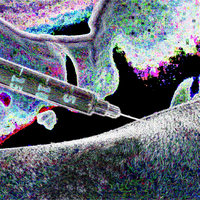| PPA | |
|---|---|
| Molecular structure via molpic based on CDK |
| Physical properties [] | |
|---|---|
| Molecular mass | 151.21 g/mol [1] |
| Appearance | White, crystalline powder [1] |
| Odor | Slight aromatic odor [1] |
| Melting point | 190-194 °C [1] |
| Decomposition | When heated to decomposition it emits very toxic fumes of nitroxides. [1] |
| Solubility | Freely soluble [1] |
| Predicted LogP | 0.8 [1] |
| Structural Identifiers [] | |
|---|---|
| Molecular formula | C9H13NO [1] |
| IUPAC name | (1R,2S)-2-amino-1-phenylpropan-1-ol [1] |
| SMILES | C[C@@H]([C@@H](C1=CC=CC=C1)O)N [1] |
| InChI | InChI=1S/C9H13NO/c1-7(10)9(11)8-5-3-2-4-6-8/h2-7,9,11H,10H2,1H3/t7-,9-/m0/s1 [1] |
| InChIKey | DLNKOYKMWOXYQA-CBAPKCEASA-N [1] |
| Pharmacokinetics[] | |
|---|---|
| Elimination half-life | 4 (3.7–4.9) hours |
| Duration of action | Oral: 3 hours |
Phenylpropanolamine
Phenylpropanolamine (also known as Propadrine, Rhindecon, Mucron, Super Odrinex, Phenylpropanolamina, Phenylpropanolaminum, Phenylfenesin, Rinexin, Fansia or Fenilpropanolamina) is a sympathomimetic substance of the phenylethanolamine class.
Chemistry
Salts []
Phenylpropanolamine is typically found in the form of its hydrochloride, maleate, bitartrate and sulfate salts.
Stereochemistry []
(RS)-Phenylpropanolamine is a racemic mixture of the optical stereoisomers
Legal status
- Australia: Phenylpropanolamine is a S4 substance.
- Brazil: Phenylpropanolamine is a F3 substance.
- Canada: Phenylpropanolamine is a Schedule VI substance.
 Anodyne
Anodyne